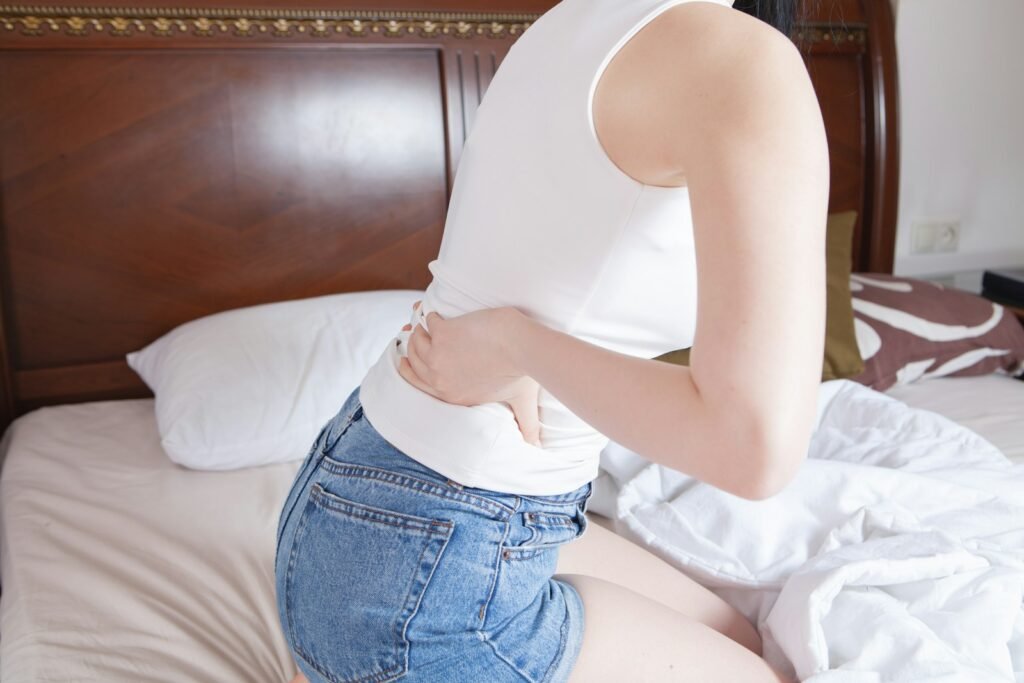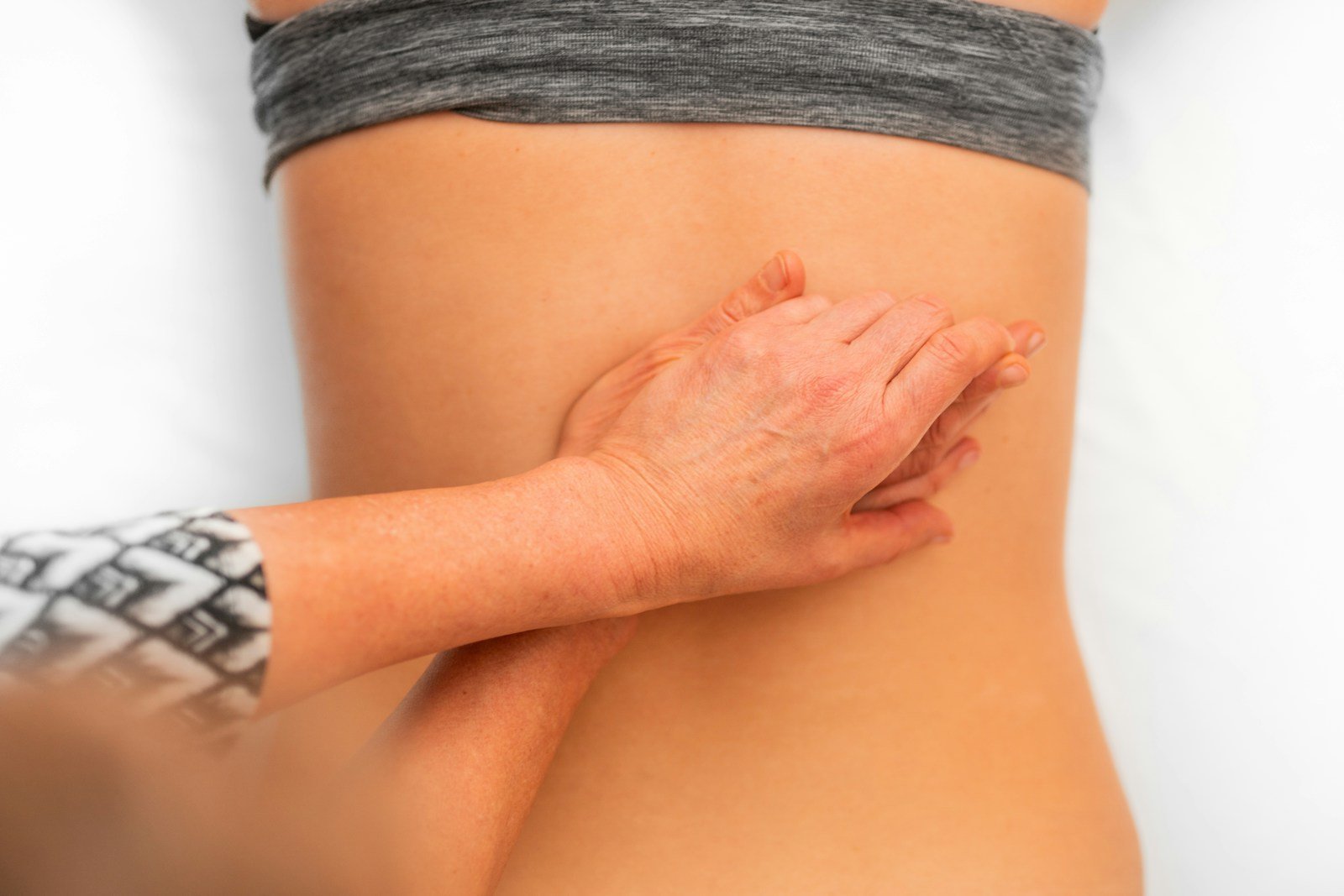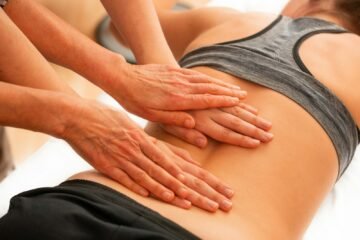Ovulation is a key part of a woman’s menstrual cycle, typically occurring midway through the cycle when an egg is released from the ovary. While many women experience no discomfort, some may notice back pain during ovulation. This back pain, often referred to as “mittelschmerz” (German for “middle pain”), can vary in intensity and may be accompanied by other symptoms. In this article, we will explore why ovulation might cause back pain, how to manage it, and when to seek medical help.
What Causes Ovulation Back Pain?
Ovulation back pain occurs as a result of the physical processes that happen during ovulation. Several factors can contribute to this discomfort:
1. Follicle Rupture
During ovulation, a follicle in the ovary bursts to release an egg. This rupture can cause discomfort, as the fluid inside the follicle can irritate surrounding tissues. Sometimes, this irritation leads to back pain, especially if the fluid reaches the area near the lower back.
2. Hormonal Changes
Hormonal fluctuations play a significant role during ovulation. Estrogen and progesterone levels rise and fall throughout the cycle, and these changes can sometimes affect the muscles and ligaments in the back. Hormonal shifts can make some women more sensitive to pain and muscle tension, leading to back discomfort.
3. Ovarian Swelling
As the ovaries prepare to release an egg, they may swell, which can create pressure and discomfort. If the ovary becomes enlarged, it may push against nearby muscles or ligaments, resulting in back pain.
4. Referred Pain
Referred pain happens when pain originates in one part of the body but is felt in another. During ovulation, the pain in the ovaries or pelvis can sometimes be “referred” to the back, leading to back pain even though the ovaries are the primary source of discomfort.
Symptoms of Ovulation Back Pain
Ovulation back pain usually occurs around the middle of the menstrual cycle, typically 10 to 14 days after the start of your period. The symptoms can vary from person to person, but common signs include:
- A dull ache or sharp pain on one side of the lower back.
- Pain that lasts anywhere from a few minutes to a couple of days.
- Discomfort that may be accompanied by pelvic pain or cramping.
- The pain is typically mild to moderate but can be more intense in some cases.
For some women, ovulation back pain might be barely noticeable, while others may find it more disruptive to their daily activities.
How to Relieve Ovulation Back Pain
Most cases of ovulation back pain are mild and can be managed with home remedies and over-the-counter medications. Here are some effective ways to relieve back pain during ovulation:
1. Pain Relief Medications
Over-the-counter pain relievers such as ibuprofen or acetaminophen can help alleviate mild to moderate ovulation pain. These medications work by reducing inflammation and numbing the pain. However, always consult your doctor before taking any medication, especially if you have underlying health conditions or are on other medications.
2. Heat Therapy
Applying heat to the lower back can relax the muscles and ease discomfort. You can use a heating pad, hot water bottle, or warm compress. Heat helps increase blood flow to the area, which promotes healing and reduces pain.
3. Rest and Relaxation
Sometimes, the best way to deal with ovulation back pain is to rest. Lying down with your legs elevated or in a comfortable position can help reduce strain on your lower back. Gentle stretching and deep breathing exercises can also help relax tense muscles.
4. Stay Hydrated
Drinking plenty of water is essential during ovulation. Dehydration can worsen muscle cramps and pain, so staying hydrated may help minimize discomfort.
5. Exercise
Gentle physical activity, such as walking or yoga, can improve circulation and reduce muscle tension. Low-impact exercises can help strengthen the muscles around your lower back, making it less likely that you’ll experience pain in the future. However, avoid intense workouts during ovulation if your back pain is severe.
Table: Comparison of Home Remedies for Ovulation Back Pain
| Home Remedy | Effectiveness | How It Works | Best For |
| Pain Relief Medications | High | Reduces inflammation and numbs pain | Moderate to severe pain |
| Heat Therapy | Moderate | Relaxes muscles and increases blood flow to the area | Mild to moderate pain |
| Rest and Relaxation | Moderate | Reduces strain on muscles and promotes recovery | Mild pain, short-term relief |
| Hydration | Low to Moderate | Prevents muscle cramps and aids body function | Mild pain, especially if dehydrated |
| Gentle Exercise | Moderate | Improves circulation and strengthens muscles | Mild to moderate pain |
When to Seek Medical Help
While ovulation back pain is typically harmless, there are instances when you should see a doctor. Seek medical advice if:
- The pain is severe or lasts longer than a few days.
- You experience heavy bleeding along with back pain.
- You have other symptoms, such as fever, nausea, or dizziness.
- The pain interferes with your daily activities or significantly worsens each cycle.
In some cases, severe or persistent back pain during ovulation could be a sign of an underlying condition such as endometriosis, ovarian cysts, or pelvic inflammatory disease (PID). It’s important to consult a healthcare professional to rule out any serious health issues.
Preventing Ovulation Back Pain
While it’s not always possible to prevent ovulation back pain, there are steps you can take to minimize the discomfort. Here are a few tips to help prevent or reduce back pain during ovulation:
1. Track Your Menstrual Cycle
By tracking your cycle, you can anticipate when you’re ovulating and take preventive measures in advance. Use a calendar, an app, or a basal body thermometer to predict your fertile window.
2. Stay Active
Regular physical activity can help strengthen your muscles and improve your overall health. A stronger core and back muscles can reduce the likelihood of experiencing ovulation back pain. Focus on exercises that improve posture and back strength, such as yoga, Pilates, or core workouts.
3. Maintain a Healthy Diet
A balanced diet rich in anti-inflammatory foods can help reduce the chances of experiencing pain during ovulation. Include plenty of fruits, vegetables, lean proteins, and whole grains in your diet. Omega-3 fatty acids, found in fish, nuts, and seeds, may also help reduce inflammation.
4. Consider Hormonal Birth Control
For women who experience severe ovulation pain, hormonal birth control methods (such as the pill, patch, or IUD) can help regulate the menstrual cycle and prevent ovulation. Talk to your doctor about the options that might work best for you.
Hormonal Treatment for Ovulation Back Pain

For women experiencing more persistent or severe ovulation back pain, hormonal treatments may be an option. These treatments work by preventing ovulation altogether or regulating hormone levels to reduce discomfort.
1. Birth Control Pills
Birth control pills are often prescribed to manage painful ovulation. These pills regulate hormones and prevent the release of eggs, which can significantly reduce or eliminate ovulation pain, including associated back pain.
2. Hormonal Intrauterine Device (IUD)
Hormonal IUDs release a small amount of progestin, which can thin the lining of the uterus and reduce the frequency of ovulation. By lessening or stopping ovulation, an IUD may also reduce pain caused by ovulation.
3. Hormone Therapy
For women not seeking birth control, hormone therapy may be recommended to stabilize hormone levels during ovulation. Discussing options with your doctor is essential to ensure the best fit for your health needs.
Alternative Therapies for Ovulation Back Pain
Aside from medication and home remedies, alternative therapies can also help alleviate ovulation back pain. Some women find relief through holistic approaches such as acupuncture, massage, and chiropractic care.
1. Acupuncture
Acupuncture involves inserting tiny needles into specific points in the body to reduce pain and inflammation. For ovulation back pain, acupuncture may help by improving circulation, relieving muscle tension, and reducing overall discomfort.
2. Massage Therapy
Targeted massage therapy can relax tight muscles in the lower back and pelvic region. A professional massage therapist can focus on areas that are prone to tension during ovulation, helping to alleviate pain.
3. Chiropractic Adjustments
Chiropractic care involves adjusting the spine and aligning the body’s musculoskeletal system. By improving spinal alignment, a chiropractor may reduce pressure on the lower back and help relieve ovulation-related back pain.
Long-Term Management of Ovulation Back Pain
For women who experience regular or chronic ovulation pain, managing this condition long-term is essential. Implementing lifestyle changes and adopting healthier habits can prevent or lessen the intensity of ovulation-related back pain over time.
1. Strengthening Core Muscles
Building strength in your core muscles, including your abdominal and lower back muscles, can improve overall stability and reduce the likelihood of pain during ovulation. Simple exercises like planks, leg raises, and bridges can help target these muscles.
2. Maintaining a Healthy Weight
Carrying excess weight can place additional pressure on your lower back, making ovulation pain more noticeable. By maintaining a healthy weight through diet and exercise, you can reduce strain on your back and overall discomfort during your cycle.
3. Regular Stretching
Incorporating stretching exercises into your daily routine can improve flexibility and relieve muscle tension in the lower back. Focus on stretches that target the hips, back, and pelvic region, such as the child’s pose or the pelvic tilt.
4. Mind-Body Techniques
Mind-body techniques like yoga and meditation can help reduce stress, improve flexibility, and increase body awareness, all of which can contribute to managing ovulation back pain. Regular practice of these techniques can also promote relaxation and reduce muscle tension.
Table: Comparison of Treatments for Ovulation Back Pain
| Treatment | Effectiveness | How It Works | Best For |
| Over-the-Counter Medications | High | Reduces inflammation and pain | Mild to moderate ovulation back pain |
| Heat Therapy | Moderate | Increases blood flow and relaxes muscles | Mild pain |
| Hormonal Birth Control | High | Prevents ovulation and regulates hormone levels | Chronic or severe ovulation pain |
| Acupuncture | Moderate | Improves circulation and relieves tension | Women seeking alternative treatments |
| Chiropractic Adjustments | Moderate | Aligns the spine to reduce pressure on muscles | Chronic or recurring back pain |
| Massage Therapy | Moderate | Relieves muscle tension in the lower back | Mild to moderate muscle-related pain |
Conclusion
Ovulation back pain, though typically harmless, can be a frustrating and uncomfortable part of the menstrual cycle for many women. By understanding the causes and symptoms, you can take the right steps to manage or even prevent the pain. Simple lifestyle changes, such as exercising, staying hydrated, and using heat therapy, can offer significant relief. For women with more severe or chronic pain, medical options like hormonal treatments or alternative therapies like acupuncture and chiropractic care can provide longer-term solutions.
If you experience ongoing or severe back pain during ovulation, it’s always best to consult with a healthcare professional. They can help determine the underlying cause and recommend the most effective treatment for your situation.
For further information on managing back pain and reproductive health, reliable resources such as WebMD and the American College of Obstetricians and Gynecologists can provide valuable insights.
Also Read: Lower Back Pain from Lifting: Causes, Treatment, and Prevention




